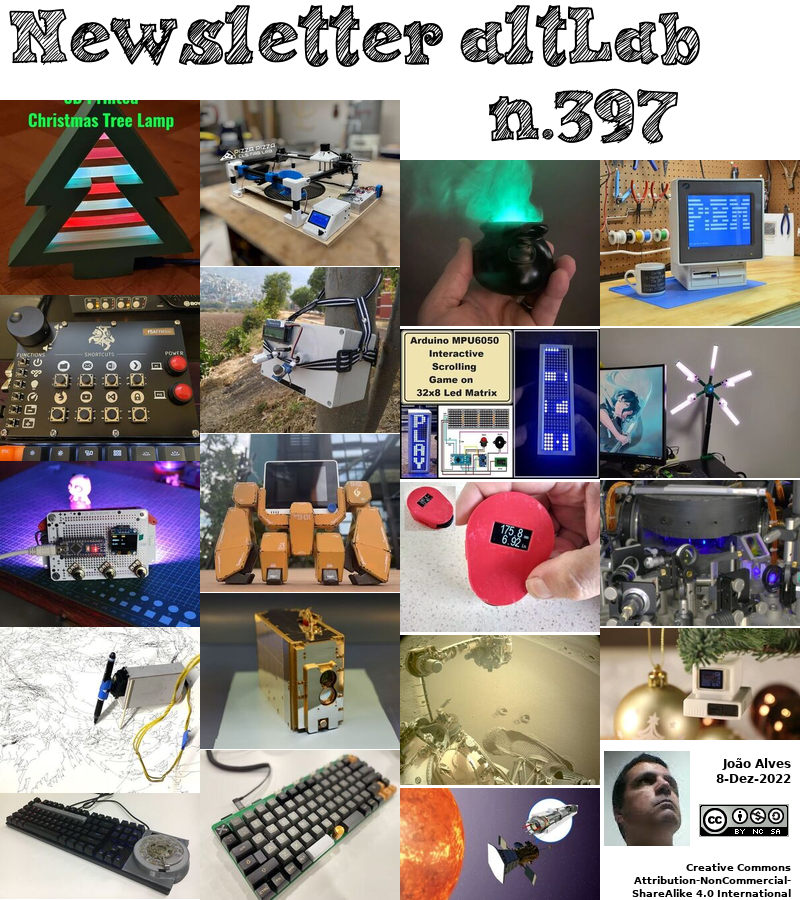2022-12-08 - Nº 397
Editorial
Esta é a Newsletter Nº 397 que se apresenta com o mesmo formato que as anteriores. Se gostar da Newsletter partilhe-a!
Todas as Newsletters encontram-se indexadas no link.
Esta Newsletter tem os seguintes tópicos:
Faz hoje anos que nascia, em 1765, o inventor, engenheiro mecânico e fabricante norte-americano Eli Whitney. Ele inventou o motor do algodão e desenvolveu a ideia e métodos para a produção em massa de peças intercambiáveis. O descaroçador de algodão é uma máquina que separa a fibra de algodão das sementes. O dispositivo, patenteado em 1793, estimulou grandemente o cultivo do algodão no sul dos EUA. Whitney virou-se subsequentemente para o fabrico de armas de fogo, no qual introduziu a noção de peças permutáveis. Isto ele aplicou no cumprimento de um contrato do governo dos EUA (1797) para o fornecimento de mosquetes. Whitney fabricou-os em peças padronizadas para remontagem, o que significa que, pela primeira vez, as peças desgastadas podiam ser substituídas por peças sobressalentes, em vez de requererem substituições especiais.
Faz hoje anos que nascia, em 1865, o matemático francês Jacques-Salomon Hadamard. Ele provou o teorema do número primo (como n se aproxima do infinito, o limite do rácio de (n) e n/ln n é 1, onde (n) é o número de números primos positivos não superior a n). Conjugado no século XVIII, este teorema não foi provado até 1896, quando Hadamard e também Charles de la Vallée Poussin, utilizaram análises complexas. O trabalho de Hadamard inclui a teoria das funções integrais e singularidades das funções representadas pela série Taylor. O seu trabalho sobre as equações diferenciais parciais da física matemática é importante. Introduziu o conceito de um valor inicial bem posicionado e de um problema de valor limite. Ao considerar problemas de valor limite, introduziu uma generalização das funções de Green (1932).
Faz hoje anos que nascia, em 1947, o bioquímico e biólogo molecular americano Thomas Cech. Ele, com Sidney Altman, recebeu o Prémio Nobel da Química de 1989 pelas suas descobertas sobre o ARN (ácido ribonucleico). Antes da investigação de Cech sobre o ARN, a maioria dos cientistas acreditava que as proteínas eram os únicos catalizadores em células vivas. As descobertas de Cech e Altman derrubaram a noção de que o ARN é meramente um mensageiro genético - um intermediário na síntese de proteínas a partir do ADN. Cech mostrou que o RNA poderia ter uma função catalítica independente, uma "ribozima", ajudando a uma reacção química sem ser consumido ou alterado. Esta descoberta teve grandes implicações para a engenharia genética, bem como para a compreensão de como surgiu a vida.
Faz hoje anos que nascia, em 1948, o físico teórico dinamarquês Per Bak. Ele cunhou o termo "crítica auto-organizada" num artigo de que foi co-autor (1987). Como ilustração, considere a pilha de areia cónica a crescer no fundo de uma ampulheta. Numerosas pequenas perturbações de grãos de areia individuais causam poucas mudanças, mas são pontuadas por deslizamentos de terra imprevisíveis. Mudanças críticas são impossíveis de prever exactamente no tempo, ou para o grão explícito. Embora desafiantes, tentar criar descrições matemáticas estende-se a terramotos, ou engarrafamentos, ou responder à forma como o universo de partículas fundamentais simples (tais como quarks e gluões) se reuniu em estruturas complexas como animais.
Em 1931, foi emitida uma patente americana pela primeira vez nos EUA para a invenção do cabo coaxial, descrita como um "sistema de condução concêntrica". Os inventores foram Lloyd Espenschied de Kew Gardens, N.Y. e Herman A. Affel de Ridgewood, N.J. A patente foi atribuída ao American Telegraph and Telephone Co. da cidade de Nova Iorque. (N.º 1.835.031). O pedido era de televisão, para a qual é necessária uma vasta gama de frequências de transmissão. Enquanto os requisitos de canais individuais para telegrafia são da ordem de algumas centenas de ciclos no máximo, e a telefonia talvez alguns milhares de ciclos, a televisão requer faixas de centenas de milhares de ciclos de largura para assegurar um grau razoável de detalhe de imagem. É utilizado um único par de condutores concêntricos.
Em 1994, aproximadamente um mês após ter anunciado a criação do elemento 110, uma equipa de cientistas alemães liderada por Peter Armbruster na Gesellschaft für schwerionenforschung (GSI) em Darmstadt, Alemanha, afirmou ter criado o elemento 111. O seu átomo tem 111 protões e 161 neutrões no seu núcleo, o que lhe dá um número de massa de 272. Como novo elemento, foi nomeado unununium, símbolo Uuu, de acordo com um sistema internacionalmente adoptado para a nomeação de novos elementos. Apenas três átomos do elemento foram feitos acelerando os átomos de níquel a alta velocidade e bombardeando-os em bismuto. Quando um átomo de cada um se fundiu para fazer o novo núcleo, este durou cerca de quatro milésimos de segundo antes de se decompor em núcleos mais pequenos. Mais tarde este elemento foi renomeado para Roentgenium. O seu nome vem do físico Wilhelm Röntgen (também soletrado Roentgen), que descobriu os raios X.
Na Newsletter desta semana apresentamos diversas noticias, artigos científicos, projetos de maker e alguns vídeos interessantes.
 João Alves ([email protected])
João Alves ([email protected])
O conteúdo da Newsletter encontra-se sob a licença  Creative Commons Attribution-NonCommercial-ShareAlike 4.0 International License.
Creative Commons Attribution-NonCommercial-ShareAlike 4.0 International License.
Novidades da Semana
Outras Notícias
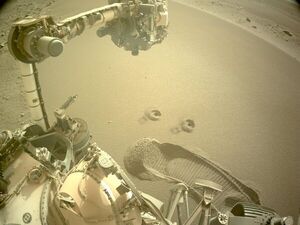
NASA’s Perseverance Rover Gets the Dirt on Mars
"The mission’s first two samples of regolith – broken rock and dust – could help scientists better understand the Red Planet and engineers prepare for future missions there. NASA’s Perseverance rover snagged two new samples from the Martian surface on Dec. 2 and 6. But unlike the 15 rock cores collected to date, these newest samples came from a pile of wind-blown sand and dust similar to but smaller than a dune. Now contained in special metal collection tubes, one of these two samples will be considered for deposit on the Martian surface sometime this month as part of the Mars Sample Return campaign. Scientists want to study Martian samples with powerful lab equipment on Earth to search for signs of ancient microbial life and to better understand the processes that have shaped the surface of Mars. Most of the samples will be rock; however, researchers also want to examine regolith – broken rock and dust – not only because of what it can teach us about geological processes and the environment on Mars, but also to mitigate some of the challenges astronauts will face on the Red Planet." [...]

Intel Research Fuels Moore’s Law and Paves the Way to a Trillion Transistors by 2030
"At IEDM 2022, on the 75th anniversary of the transistor, Intel targets new 10x density improvement in packaging technology and uses novel material just 3 atoms thick to advance transistor scaling. Today, Intel unveiled research breakthroughs fueling its innovation pipeline for keeping Moore’s Law on track to a trillion transistors on a package in the next decade. At IEEE International Electron Devices Meeting (IEDM) 2022, Intel researchers showcased advancements in 3D packaging technology with a new 10x improvement in density; novel materials for 2D transistor scaling beyond RibbonFET, including super-thin material just 3 atoms thick; new possibilities in energy efficiency and memory for higher-performing computing; and advancements for quantum computing. Commemorating the 75th anniversary of the transistor, Dr. Ann Kelleher, Intel executive vice president and general manager of Technology Development, will lead a plenary session at IEDM. Kelleher will outline the paths forward for continued industry innovation – rallying the ecosystem around a systems-based strategy to address the world’s increasing demand for computing and more effectively innovate to advance at a Moore’s Law pace. The session, “Celebrating 75 Years of the Transistor!" [...]
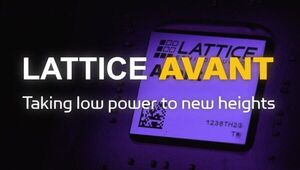
Lattice Extends Low Power Leadership with New Lattice Avant FPGA Platform
"Lattice Semiconductor (NASDAQ: LSCC), the low power programmable leader, today unveiled Lattice Avant™, a new FPGA platform purpose-built to bring the company’s power efficient architecture, small size, and performance leadership to mid-range FPGAs. Lattice Avant offers best-in-class power efficiency, advanced connectivity, and optimized compute that enable Lattice to address an expanded set of customer applications across the Communications, Computing, Industrial, and Automotive markets. “With Lattice Avant, we extend our low power leadership position in the FPGA industry and are poised to continue our rapid pace of innovation, while also doubling the addressable market for our product portfolio,” said Jim Anderson, President and CEO, Lattice Semiconductor. “We created Avant to address our customers’ need for compelling mid-range FPGA solutions, and we’re excited to help them accelerate their designs with new levels of power efficiency and performance.” “Enormous amounts of data are being generated every day by billions of connected sensors, devices, and systems supported by AI algorithms, creating an accelerated need for intelligence at the Edge. This trend requires developers and OEMs to look for more flexible and adaptable solutions,” said Patrick Moorhead, CEO and Chief Analyst at Moor Insights & Strategy. “The introduction of Lattice Avant addresses this trend with its high-performance data processing capability where the need for innovation, efficiency, and flexibility is rapidly growing.” Lattice Avant enables system and application developers to address important industry challenges around increases in technology connectedness and intelligence, the accelerating demand for innovation, and the growing need for efficiency and flexibility in system and application design." [...]
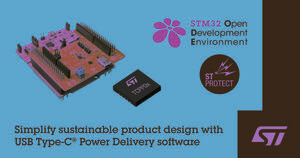
STMicroelectronics simplifies sustainable product design with USB Type-C® Power Delivery software for STM32 microcontrollers
"STMicroelectronics’ latest X-CUBE-TCPP software pack enhances the Company’s portfolio of USB Type-C® port-protection ICs and STM32 interface IP (intellectual property) to simplify product designs leveraging the USB Power Delivery specification. USB Power Delivery supports operating modes from legacy 5V/0.5A up to 48V/5A (240-Watt) in the latest Revision 3.1 specification. The expanded power capacity inspires innovative product design and assists new sustainability legislation. One example is the recent EU agreement for USB Type-C to become the common charging port in all mobile phones, tablets, and cameras to reduce electronic waste. New product designs that leverage USB Power Delivery include power banks, smart speakers, PC peripherals, communication equipment, medical devices, POS terminals, industrial displays, and battery-powered embedded applications. ST’s X-CUBE-TCPP software pack eases development in the STM32Cube ecosystem and provides libraries for the three USB Type-C port-protection ICs in ST’s portfolio." [...]
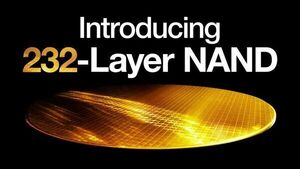
Micron Delivers the World’s Most Advanced Client SSD Featuring 232-Layer NAND Technology
"New Micron 2550 SSD brings outstanding PCIe Gen4 performance and superior user experience Micron Technology, Inc., (Nasdaq: MU), today announced it is shipping the Micron 2550 NVMe™ SSD to global PC OEM customers for use in mainstream laptops and desktops. The 2550 is the world’s first client SSD to ship using NAND over 200 layers. Delivering performance that eclipses the competition1 through its density and power advantages, the 2550 provides users with responsiveness and the low power consumption needed to extend battery life for work and home PCs. “We focused on delivering a superior user experience for PC users with this SSD,” said Praveen Vaidyanathan, vice president and general manager of the Client Storage Group at Micron. “The new 2550 SSD builds on our established and broadly adopted PCIe Gen4 architecture. It also incorporates Micron’s industry-leading 232-layer NAND and focuses on thermal architecture and power design." [...]

STMicroelectronics boosts EV performance and driving range with new silicon-carbide power modules
"Hyundai Motor Company has chosen ST’s highly efficient ACEPACK DRIVE power modules for multiple models of its E-GMP vehicle platform STMicroelectronics (NYSE: STM), a global semiconductor leader serving customers across the spectrum of electronics applications, has released high-power modules for electric vehicles that boost performance and driving range. ST’s new silicon-carbide (SiC) power modules have been selected for Hyundai’s E-GMP electric-vehicle platform shared by KIA EV6 and several models. Five new SiC-MOSFET based power modules provide flexible choices for vehicle makers, covering a selection of power ratings and support for operating voltages commonly used in electric vehicle (EV) traction applications. Housed in ST’s ACEPACK DRIVE package optimized for traction applications, the power modules are reliable thanks to sintering technology, robust, and easy for manufacturers to integrate in EV drives. Internally, the main power semiconductors are ST’s third-generation (Gen3) STPOWER SiC MOSFETs, which combine industry-leading figure of merit (RDS(ON) x die area) with very low switching energy and super performance in synchronous rectification. “ST silicon carbide solutions are enabling major automotive OEMs to set the pace of electrification when developing future generations of EVs,” said Marco Monti, President, Automotive and Discrete Group, STMicroelectronics." [...]

SK hynix Develops MCR DIMM – World’s Fastest Server Memory Module
"SK hynix Inc. (or “the company”, www.skhynix.com) announced today that it has developed working samples of DDR51 Multiplexer Combined Ranks2 (MCR) Dual In-line Memory Module, the world’s fastest server DRAM product. The new product has been confirmed to operate at the data rate of minimum 8Gbps, and at least 80% faster than 4.8Gbps of the existing DDR5 products. MCR DIMM is an achievement coming from out-of-the-box thinking with an aim to improve the operation speed of DDR5. Challenging the prevailing concept that the operation speed of DDR5 relies on that of DRAM chip itself, engineers sought to find a way to improve the speed of modules instead of chips for development of the latest product. SK hynix designed the product in a way that enables simultaneous operation of two ranks by utilizing the data buffer3 installed onto the MCR DIMM based on Intel’s MCR technology. By enabling simultaneous operation of two ranks, MCR DIMM allows transmission of 128 bytes of data to CPU at once, compared with 64 bytes fetched generally in conventional DRAM module." [...]

Microchip Showcases RISC-V-Based FPGA and Space-Compute Solutions at RISC-V Summit
"PolarFire® devices lead in delivering 2X power efficiency, military grade security and highest reliability, which will be extended by the PolarFire 2 FPGA roadmap Mid-range FPGAs and System-on-Chip (SoC) FPGAs have played a major role in moving computer workloads to the network edge. Microchip Technology (Nasdaq: MCHP) has helped fuel this transition with its award-winning FPGAs, while also delivering the first RISC-V-based FPGAs that provide twice the power efficiency of competing mid-range FPGAs, and feature a best-in-class design, operating system and solutions ecosystem. The company will be showing its solutions at the 2022 RISC-V Summit and previewing its PolarFire 2 FPGA silicon platform and RISC-V-based processor subsystem and software suite roadmap. It will also be discussing a RISC-V-based High-Performance Spaceflight Computing (HPSC) processor that it is developing for NASA and the aerospace and defense industry. “Microchip was the first to offer FPGAs for power-efficient edge-compute segments, and the first to bring SoC FPGAs into volume production that support the RISC-V open Instruction Set Architecture,” said Shakeel Peera, vice president of marketing for Microchip’s FPGA business unit. “At this year's summit, we are extremely excited to showcase our production ready PolarFire SoC family, partner ecosystem and solutions for today's power sensitive edge compute systems." [...]
Ciência e Tecnologia

Can Plasma Instability In Fact Be the Savior for Magnetic Nozzle Plasma Thrusters
"A research group has demonstrated that spontaneously excited plasma waves may be the solution to a long-associated problem with magnetic nozzle plasma thrusters, turning conventional thinking on its head. Details of their research were published in the journal Scientific Reports on December 5, 2022. In magnetic nozzle radio frequency thrusters, sometimes referred to as helicon thrusters, magnetic nozzles channel and accelerate plasma to allow spacecraft to generate thrust. The technology, which harnesses electric propulsion, shows great potential for ushering in a new era of space travel. Yet the so-called "plasma detachment" problem has hampered further development. Since magnetic field lines always form closed loops, the ones inside magnetic nozzles inevitably turn back to the thruster structure." [...]
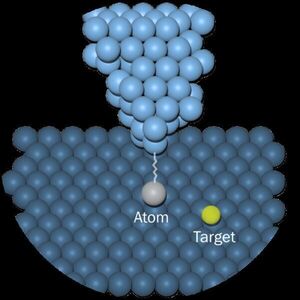
The smallest robotic arm you can imagine is controlled by artificial intelligence
"Researchers used deep reinforcement learning to steer atoms into a lattice shape, with a view to building new materials or nanodevices. In a very cold vacuum chamber, single atoms of silver form a star-like lattice. The precise formation is not accidental, and it wasn’t constructed directly by human hands either. Researchers used a kind of artificial intelligence called deep reinforcement learning to steer the atoms, each a fraction of a nanometer in size, into the lattice shape. The process is similar to moving marbles around a Chinese checkers board, but with very tiny tweezers grabbing and dragging each atom into place. The main application for deep reinforcement learning is in robotics, says postdoctoral researcher I-Ju Chen." [...]

Locomotion modeling evolves with brain-inspired neural networks
"A team of scientists at EPFL have built a new neural network system that can help understand how animals adapt their movement to changes in their own body and to create more powerful artificial intelligence systems. Deep learning has been fueled by artificial neural networks, which stack simple computational elements on top of each other, to create powerful learning systems. Given enough data, these systems can solve challenging tasks like recognize objects, beat human’s at Go and also control robots. “As you can imagine, the architecture of how you stack these elements on top of each other might influence how much data you need to learn and what the ceiling performance is,” says Professor Alexander Mathis at EPFL’s School of Life Sciences. Working with doctoral students Alberto Chiappa and Alessandro Marin Vargas, the three scientists have developed a new network architecture called DMAP for “Distributed Morphological Attention Policy”. This network architecture incorporates fundamental principles of biological sensorimotor control, making it an interesting tool to study sensorimotor function." [...]
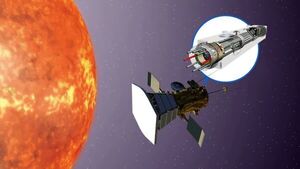
Researchers say space atomic clocks could help uncover the nature of dark matter
"Studying an atomic clock on-board a spacecraft inside the orbit of Mercury and very near to the Sun might be the trick to uncovering the nature of dark matter, suggests a new study published in Nature Astronomy. Dark matter makes up more than 80 per cent of mass in the universe, but it has so far evaded detection on Earth, despite decades of experimental efforts. A key component of these searches is an assumption about the local density of dark matter, which determines the number of dark matter particles passing through the detector at any given time, and therefore the experimental sensitivity. In some models, this density can be much higher than is usually assumed, and dark matter can become more concentrated in some regions compared to others. One important class of experimental searches are those using atoms or nuclei, because these have achieved incredible sensitivity to signals of dark matter. This is possible, in part, because when dark matter particles have very small masses, they induce oscillations in the very constants of nature." [...]
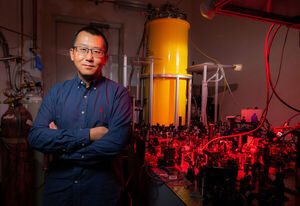
New instrument measures supercurrent flow, data has applications in quantum computing
"Jigang Wang offered a quick walk-around of a new sort of microscope that can help researchers understand, and ultimately develop, the inner workings of quantum computing. Wang, an Iowa State University professor of physics and astronomy who's also affiliated with the U.S. Department of Energy's Ames National Laboratory, described how the instrument works in extreme scales of space, time and energy -- billionths of a meter, quadrillionths of a second and trillions of electromagnetic waves per second. Wang pointed out and explained the control systems, the laser source, the maze of mirrors that make an optical path for light pulsing at trillions of cycles per second, the superconducting magnet that surrounds the sample space, the custom-made atomic force microscope, the bright yellow cryostat that lowers sample temperatures down to the temperature of liquid helium, about -450 degrees Fahrenheit. Wang calls the instrument a Cryogenic Magneto-Terahertz Scanning Near-field Optical Microscope. (That's cm-SNOM for short.) It's based at the Ames National Laboratory's Sensitive Instrument Facility just northwest of Iowa State's campus." [...]

New quantum dots study uncovers implications for biological imaging
"A new study involving researchers at the University of Illinois Chicago achieved a milestone in the synthesis of multifunctional photonic nanomaterials. In a paper published in the American Chemical Society's journal Nano Letters, they report the synthesis of semiconductor "giant" core-shell quantum dots with record-breaking emissive lifetimes. In addition, the lifetimes can be tuned by making a simple alteration to the material's internal structure. The group, which included collaborators from Princeton University and Pennsylvania State University, demonstrated a new structure-property concept that imparts the ability to spatially localize electrons or holes within a core/shell heterostructure by tuning the charge carrier's kinetic energy on a parabolic potential energy surface. According to UIC chemist Preston Snee, this charge carrier separation results in extended radiative lifetimes and in continuous emission at the single-nanoparticle level. "These properties enable new applications for optics, facilitate novel approaches such as time-gated single-particle imaging and create inroads for the development of other new advanced materials," said Snee, UIC associate professor of chemistry and the study's senior co-author." [...]
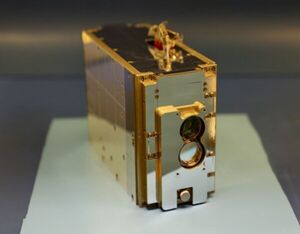
Communications system achieves fastest laser link from space yet
"Lincoln Laboratory’s TeraByte InfraRed Delivery system sent data from a satellite to Earth at 100 Gbps — a rate that will transform future science missions. In May 2022, the TeraByte InfraRed Delivery (TBIRD) payload onboard a small CubeSat satellite was launched into orbit 300 miles above Earth's surface. Since then, TBIRD has delivered terabytes of data at record-breaking rates of up to 100 gigabits per second — 100 times faster than the fastest internet speeds in most cities — via an optical communication link to a ground-based receiver in California. This data rate is more than 1,000 times higher than that of the radio-frequency links traditionally used for satellite communication and the highest ever achieved by a laser link from space to ground. And these record-setting speeds were all made possible by a communications payload roughly the size of a tissue box. MIT Lincoln Laboratory conceptualized the TBIRD mission in 2014 as a means of providing unprecedented capability to science missions at low cost." [...]

Milestone for laser technology
"Extremely intense light pulses generated by free-electron lasers (FELs) are versatile tools in research. Particularly in the X-ray range, they can be deployed to analyze the details of atomic structures of a wide variety of materials and to follow fundamental ultrafast processes with great precision. Until now, FELs such as the European XFEL in Germany are based on conventional electron accelerators, which make them long and expensive. An international team led by Synchrotron SOLEIL, France, and Helmholtz-Zentrum Dresden-Rossendorf (HZDR), Germany, has now achieved a breakthrough on the way to an affordable alternative solution: they were able to demonstrate seeded FEL lasing in the ultraviolet regime based on a still young technology – laser-plasma acceleration. In the future, this might allow to build more compact systems, which would considerably expand the possible applications of FELs. The research collaboration presents their results in the journal Nature Photonics." [...]
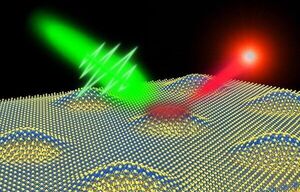
New Quantum Light Source Paves the Way to a Quantum Internet
"The Science Conventional light sources for fiber-optic telecommunications emit many photons at the same time. Photons are particles of light that move as waves. In today’s telecommunication networks, information is transmitted by modulating the properties of light waves traveling in optical fibers, similar to how radio waves are modulated in AM and FM channels. In quantum communication, however, information is encoded in the phase of a single photon—the photon’s position in the wave in which it travels. This makes it possible to connect quantum sensors in a network spanning great distances and to connect quantum computers together. Researchers recently produced single-photon sources with operating wavelengths compatible with existing fiber communication networks." [...]

Why doesn’t aluminium rust?
"From cars to cans, we are surrounded by the enduring silvery shine of aluminium. We asked metallurgist Casper van der Eijk what makes it worth its weight in gold. Despite being the most abundant metal on Earth, constituting over 8 % of the Earth’s core mass, aluminium was only discovered in the 1820s, by Danish physicist Hans Christian Ørsted. This is partly explained because pure aluminium doesn’t exist in nature as it binds easily with other elements like oxygen. Our main source of aluminium is the sedimentary rock, bauxite. As Van der Eijk explains, “It takes about four kilos of bauxite to produce one kilo of aluminium metal." [...]

New tech's potential to significantly reduce energy storage costs
"An international team of researchers are hoping that a new, low-cost battery which holds four times the energy capacity of lithium-ion batteries and is far cheaper to produce will significantly reduce the cost of transitioning to a decarbonised economy. Led by Dr Shenlong Zhao from the University's School of Chemical and Biomolecular Engineering, the battery has been made using sodium-sulphur -- a type of molten salt that can be processed from sea water -- costing much less to produce than lithium-ion. Although sodium-sulphur (Na-S) batteries have existed for more than half a century, they have been an inferior alternative and their widespread use has been limited by low energy capacity and short life cycles. Using a simple pyrolysis process and carbon-based electrodes to improve the reactivity of sulphur and the reversibility of reactions between sulphur and sodium, the researchers' battery has shaken off its formerly sluggish reputation, exhibiting super-high capacity and ultra-long life at room temperature. The researchers say the Na-S battery is also a more energy dense and less toxic alternative to lithium-ion batteries, which, while used extensively in electronic devices and for energy storage, are expensive to manufacture and recycle. Dr Zhao's Na-S battery has been specifically designed to provide a high-performing solution for large renewable energy storage systems, such as electrical grids, while significantly reducing operational costs." [...]
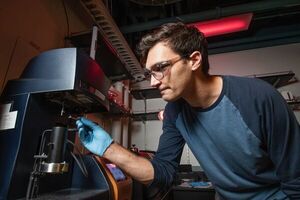
New Process Allows 3-D Printing of Microscale Metallic Parts
"Engineers at Caltech have developed a method for 3-D printing pure and multicomponent metals, at a resolution that is, in some cases, an order of magnitude smaller than previously possible. The process, which uses water-based chemistry and 3-D printing, was described in a paper published in Nature on October 20. The new process can be used for a variety of metals—even multiple types in the same manufactured part—with only minor adjustments. It has the potential to pave the way for fabricating tiny components for microelectronic mechanical systems (MEMS)—precise components for vehicles and space applications, heat exchangers, or biomedical devices. In 3-D printing (also known as additive manufacturing) an object is built up layer by layer, allowing for the creation of structures that would be impossible to manufacture by conventional metal-forming methods like forging and inkjet molding, or via subtractive methods such as etching or milling. Current 3-D metal-printing processes use a laser to zap metal powders, which flash melts the metal so it then solidifies into specific shapes." [...]

A faster way to preserve privacy online
"New research enables users to search for information without revealing their queries, based on a method that is 30 times faster than comparable prior techniques. Searching the internet can reveal information a user would rather keep private. For instance, when someone looks up medical symptoms online, they could reveal their health conditions to Google, an online medical database like WebMD, and perhaps hundreds of these companies’ advertisers and business partners. For decades, researchers have been crafting techniques that enable users to search for and retrieve information from a database privately, but these methods remain too slow to be effectively used in practice. MIT researchers have now developed a scheme for private information retrieval that is about 30 times faster than other comparable methods. Their technique enables a user to search an online database without revealing their query to the server." [...]

Lightweight with maximum surface area
"Metal foams are used in many applications, including cooling and filtration. Start-up Apheros' novel metal foams offer unprecedented properties. Dr. Julia Carpenter from the Complex Materials Group at ETH Zurich is the co-inventor and driving force behind the young company. Her metal foams have a unique microstructure. Compared to existing products, they impress with very low weight, an extremely large surface area and the ability to absorb liquids. These properties are achieved through a newly developed production method and enable the use of these metal foams in various applications." [...]

Nuclear Theorists Collaborate to Explore 'Heavy Flavor' Particles
"Leading U.S. researchers will develop framework for describing exotic particles' behavior at various stages in the evolution of hot nuclear matter Scientists at the U.S. Department of Energy’s (DOE) Brookhaven National Laboratory will participate in a new Topical Theory Collaboration funded by DOE’s Office of Nuclear Physics to explore the behavior of so-called “heavy flavor” particles. These particles are made of quarks of the “charm” and “bottom” varieties, which are heavier and rarer than the “up” and “down” quarks that make up the protons and neutrons of ordinary atomic nuclei. By understanding how these exotic particles form, evolve, and interact with the medium created during powerful particle collisions, scientists will gain a deeper understanding of a unique form of matter known as a quark-gluon plasma (QGP) that filled the early universe. These experiments take place at the Relativistic Heavy Ion Collider (RHIC) at Brookhaven Lab and the Large Hadron Collider (LHC) at Europe’s CERN laboratory. Scientists accelerate and smash together the nuclei of heavy atoms at energies high enough to set free the quarks and gluelike “gluons” that hold ordinary matter together. These collisions create a soup of quarks and gluons much like the matter that existed just after the Big Bang, some 14 billion years ago." [...]

Iron for energy storage
"In the futuere the metal could store energy from renewable sources, for example for transportation Energy from sun or wind is weather-dependent and lacks an efficient way to store and transport it. Scientists from the Max-Planck-Institut für Eisenforschung and TU Eindhoven are investigating iron as a possible energy carrier. The idea is to store excess energy in iron and release it through combustion of iron into iron oxide. The team is working to understand the underlying processes and upscale the technique to industrial relevance. Gaining sustainable energy from wind, solar and water is commonly known and applied. However, renewable sources depend on environmental conditions: in peak times of wind and sun, excess energy is produced that is needed in times of less wind and sunshine." [...]

Building energy-efficient computing platforms
"The massive growth of data centres that consume enormous amounts of energy has contributed significantly to power shortages worldwide. With rising demand for faster and more intelligent computers and devices, there is a pressing need to develop alternatives to traditional electronic components that will make these devices more energy-efficient. In two recent studies, researchers at the Centre for Nano Science and Engineering (CeNSE), IISc, report the development of a highly energy-efficient computing platform that offers promise in building next-generation electronic devices. Instead of using complementary metal-oxide semiconductors (CMOS) which are the building blocks of most electronic circuits today, the team used components called memristors that can both store data and perform computation. By designing unique memristors based on metal-organic complexes, the team could cut down the number of components needed in a circuit, greatly increasing the speed and efficiency. “We have now discovered a molecular circuit element that can capture complex logic functions within itself, facilitating in-memory computations in a smaller number of time steps and using much fewer elements than usual,” says Sreetosh Goswami, Assistant Professor at CeNSE who led both the studies published in Advanced Materials." [...]

New lidar technique could help robotic vehicles land safely on Mars
"Researchers field test 3D flash lidar combined with super-resolution algorithm for hazard avoidance during landing In a new study, scientists demonstrate a new lidar technique that could help robotic vehicles avoid hazards when landing during future missions to Mars or the moon. The method uses flash lidar to record full 3D images with a single laser pulse, which prevents the motion blur that is present with traditional lidar approaches. Farzin Amzajerdian from NASA Langley Research Center will present the new findings at the Optica Laser Congress, 11 – 15 December 2022. The presentation entitled “Development of a 3-D Flash Lidar for Terrain Sensing and Safe Landing on Planetary Bodies” will be presented on-site and online in a hybrid format. “Lidar technology plays a critical role in future missions to the Moon, Mars, and other solar system bodies since they require precision safe landing at specific locations where valuable resources may be found or may lead to important scientific discoveries,” said principal investigator, Farzin Amzajerdian, Ph.D. A streamlined design Flash lidar is useful for several purposes throughout the process of landing robotic vehicles. As a vehicle descends to a surface, flash lidar can be used to generate 3D terrain maps from an altitude of several kilometers to reduce position error." [...]
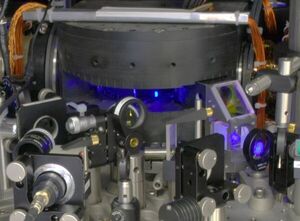
Quantum clocks in the real world
"Modern atomic quantum clocks are the most precise and accurate scientific instruments ever created. Currently, these so-called optical atomic clocks are mostly found in physics laboratories, often filling an entire laboratory. The AQuRA-consortium brings together European universities, industry partners and EU metrology institutes in an effort to make quantum clocks more robust and compact. This will allow real-world applications like significantly improved and faster telecommunication networks, or underground exploration using fluctuations in gravity. The consortium led by the University of Amsterdam received a €7.5 million European Commission Horizon grant to achieve their goals over the next three and a half years. Accurately measuring time is important in many settings." [...]

Say Hello to the Toughest Material on Earth
"Scientists have measured the highest toughness ever recorded, of any material, while investigating a metallic alloy made of chromium, cobalt, and nickel (CrCoNi). Not only is the metal extremely ductile – which, in materials science, means highly malleable – and impressively strong (meaning it resists permanent deformation), its strength and ductility improve as it gets colder. This runs counter to most other materials in existence. The team, led by researchers from Lawrence Berkeley National Laboratory (Berkeley Lab) and Oak Ridge National Laboratory, published a study describing their record-breaking findings in Science on Dec. 2, 2022. “When you design structural materials, you want them to be strong but also ductile and resistant to fracture,” said project co-lead Easo George, the Governor’s Chair for Advanced Alloy Theory and Development at ORNL and the University of Tennessee. “Typically, it’s a compromise between these properties." [...]

Unusual gamma-ray burst reveals previously undetected hybrid neutron-star merger event
"The standard view of gamma-ray bursts as a signature for different types of dying stars might need a rewrite. Recent astronomical observations, supported by theoretical modeling, reveal a new observational fingerprint of neutron-star mergers, which may shed light on the production of heavy elements throughout the universe. “Astronomers have long believed that gamma-ray bursts fell into two categories: long-duration bursts from imploding stars and short-duration bursts from merging compact stellar objects,” said Chris Fryer, an astrophysicist and Laboratory Fellow at Los Alamos National Laboratory. Fryer is coauthor and leader of the modeling team on a paper about the phenomenon published today in Nature. “But in a recently observed event, we've found a kilonova along with a long-duration gamma-ray burst, and that has thrown a wrench into this simple picture.” Hypernovae/supernovae are the visible-light, transient objects produced in these explosions from imploding objects, while kilonovae are visible-light transients produced by merging compact objects where at least one is a neutron star. Gamma-ray bursts can accompany both types of transients." [...]
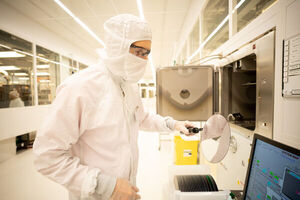
All the possibilities of the cleanroom
"MIT-trained electrical engineer Jorg Scholvin guides researchers fabricating new technology at MIT.nano. Jorg Scholvin ’00, MEng ’01, PhD ’06 first set foot in a cleanroom midway through his undergraduate studies. It was the late 1990s and, as a computer science major, he’d registered for a fabrication class for a firsthand look at how a computer is assembled. “It’s amazing to see how it’s built,” he realized, “and to build it myself.” By the end of the semester, Scholvin had shifted his focus toward electrical engineering and went on to spend several years at MIT developing his fabrication skills. Now, he guides others through all the possibilities of the cleanroom as an assistant director at MIT.nano, the Institute’s center for nanoscale science and engineering. Originally from Germany, Scholvin has made MIT his home base for more than 25 years, minus a brief interlude in finance." [...]
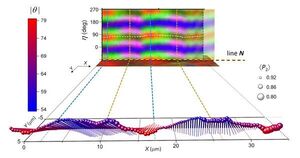
Molecules Have an Orientation, and Scientists Have a New Way to Measure It
"In some materials, the molecules line up in a regular, repeating pattern. In others, they all point in random directions. But in many advanced materials used in medicine, computer chip manufacturing and other industries, the molecules arrange themselves in complex patterns that dictate the material’s properties. Scientists haven’t had good ways to measure molecular orientation in three dimensions at a microscopic scale, leaving them in the dark about why some materials behave the way they do. Now, researchers at the National Institute of Standards and Technology (NIST) have measured the 3D orientation of the molecular building blocks of plastics, called polymers, observing details as small as 400 nanometers, or billionths of a meter, in size. The measurements, described in the Journal of the American Chemical Society, show polymer chains twisting and undulating in complex and unexpected ways." [...]
Projetos Maker
Diversos Projetos interessantes.
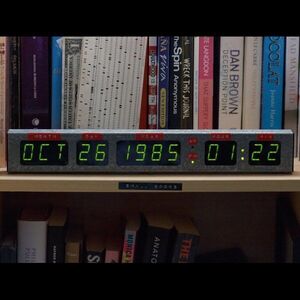
Time Circuits Timepiece
"A practical-size, Back to the Future themed digital clock mimicking the "Present Time" portion of the DeLorean's time circuit displays. Back to the Future time circuits are a bit over done around the internet, but my desk could really do with a functional tribute to the trilogy. Let's make a nice digital timepiece. - It should tell the time - It should automatically know the time using some reliable source (GPS time or NTP over WiFi) - It may have an annoying alarm Bonus points: - Use the year segments to display something more useful on a cycle: temperature, humidity, or perhaps a terrible rendition of the game Snake. " [...]

Pulse Width Modulation and LEDs
"How to use PWM with LEDs - from the basics to advanced intensity and color management This project is basically a tutorial on managing the brightness of an LED and the color of an RGB LED using PWM or pulse width modulation. In Section I, we will cover the basics of PWM and how it's used with Arduinos. In Section ll, we will discuss smooth dimming of a single color LED, which requires something other than linearly changing PWM, and in Section lll, we will look at creating colors, and managing a rainbow of colors produced by RGB LEDs. For fun with this project, I am using "fake neon" - the edge lighting LED strips from Adafruit, specifically the 1 meter RGB version without Neopixel capability. But really, to try everything we talk about here, all you really need is any common anode RGB LED. " [...]
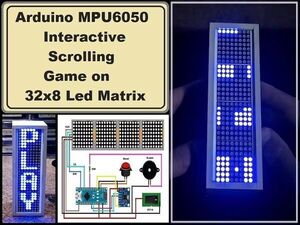
Arduino MPU6050 Interactive scrolling game on 32x8 Matrix
"How to make an interesting interactive game, on a 32 by 8 LED matrix module, which is controlled by moving the device. This time I will show you how to make an interesting interactive game, on a 32 by 8 LED matrix, which is controlled by moving the device. During a certain movement of the device, the MPU6050 sensor sends a signal to the microcontroller, and based on that information, the microcontroller performs a given action on the screen. In fact, the sensor represents a so-called air controller that we can find as part of remote controls for modern TVs. The project is featured on Benjamin Balogh's GiHub page (https://github.com/benibalogh/LEDMatrix-Games), where you can find the original code. The source code is made in Visual Studio with support for Arduino, known as Visual Micro." [...]

Hand-held measuring tool
"A simple measuring tool that displays both metric and imperial measurements. It comes complete with built in battery charger. While surfing the Instructables website, I came across the HTX Universal Measuring Wheel by Artur_Rocker. While I had previously built a measuring wheel, it used a fairly big wheel. This means that when measuring inside walls, the closest it can get to the wall is dependent on the radius of that wheel. " [...]

Rotary Keyboard
"I have a coworker who is fond of reminiscing about the good ol’ days, when his grandparents had a rotary dial phone on the wall that they were renting from the phone company. Combine this with his devotion to the tenkey pad on a full-size keyboard and the fact that I happened to have an old rotary dial in my bin of spare parts, and the path forward for this year’s April Fool’s prank was self-evident. I mean, of course, that buying a cheap $13 mechanical keyboard off eBay and hacking the rotary dial into it was the most reasonable course of action. Firmware While the easy route out with a fabrication project like this is just to go for cosmetic completeness, I figured that it was imperative that the dial actually work for numeric input - especially since I was planning to remove the number row as well, thus forcing the use of the rotary dial for numeric or symbolic entry. My rotary dial has two primary pairs of contacts. One goes open when the dial is moved past the 1 position, and the other creates the characteristic pulse train upon release (one pulse per numeric position)." [...]
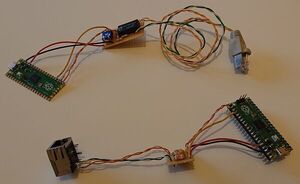
pico_eth
"RP2040 Minimal hardware (PIO) Ethernet interface + LwIP TCP/IP stack driver This library allows you to add Ethernet 10Base-T compatible connectivity to your Pico at the cost of some passive components. It uses the proven TCP/IP lwIP stack provided in the latest RP2040 SDK. It is therefore compatible with programs written in polling mode for the Pico W or existing lwIP apps and code. It is not recommended to connect the electronic assemblies described on this page to equipment that uses or provides Power over Ethernet (PoE). It is not recommended to connect to Ethernet without an isolation transformer, it's electrically insecure and will result in more lost frames! " [...]
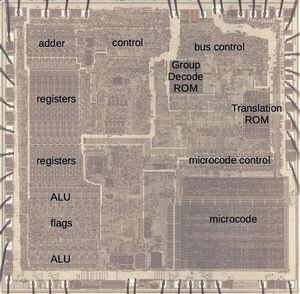
How the 8086 processor's microcode engine works
"The 8086 microprocessor was a groundbreaking processor introduced by Intel in 1978. It led to the x86 architecture that still dominates desktop and server computing. The 8086 chip uses microcode internally to implement its instruction set. I've been reverse-engineering the 8086 from die photos and this blog post discusses how the chip's microcode engine operated. I'm not going to discuss the contents of the microcode or how the microcode controls the rest of the processor here. Instead, I'll look at how the 8086 decides what microcode to run, steps through the microcode, handles jumps and calls inside the microcode, and physically stores the microcode." [...]

Using I2C sensors on a linux via a USB and IIO
"A short story of getting a tiny, cheap USB I²C adapter for a home server, learning about the Industrial I/O linux subsystem, and connecting it to collectd. A few months ago I wrote about using a Raspberry Pi with some I²C sensors to collect data for Collectd1. While it worked well, it made me realise that having the RPi running a full fledged operating system means I need to apply security patches to yet another machine, and that is not something I want to deal with. I also have a former laptop, running as a ZFS based NAS, so why not use that? After venturing into a fruitless dig to use the I²C port in the VGA connector2 I verified that indeed, as concluded in the tutorial, it doesn't work with embedded Intel graphics on linux. Alternative I started looking at USB I²C adapter, but they are expensive." [...]

PiBM PS/2 Model 25 - 3D Printing, Assembly, and Electronics
"Fully operational mini version of the IBM PS/2 Model 25 from 1987, recreated using a Raspberry Pi 4B as the computer. The original has an all-in-one design, which mimicked the popular original Macintosh. There are several variants, but the one our family owned was an Intel 8086 8MHz CPU, 12" MCGA display, 720KB 3.5" disk drive, and 512KB RAM. I no longer own this, but after seeing this project of a mini Commodore 64 monitor, it seemed possible that the PS/2 25 could be likewise crafted. This version is built around a 10.4" 1024x768 LCD Panel, the Raspberry Pi, and a 10A power supply. It also features mounting for a power-switch that is very similar to the original, working LED power and disk activity lights, a spring loaded eject button (otherwise non operational), audio amplifier with control knob and speaker mounting, and mounting for a switching headphone jack." [...]

Death Stranding Desk Lamp
"A smart table lamp based on the Death Stranding Odradek device, the lamp consists of a combination of five individual light-emitting blades A smart table lamp based on the Death Stranding Odradek device, the lamp consists of a combination of five individual light-emitting blades, each with three degrees of freedom, so you can adjust the angle you need at any time; the internal integration of XIAO nRF52840 Sense Bluetooth master control board and WS2812 phantom light strip, which means you can control it through the cell phone APP to display different colors and brightness. A monotonous and cluttered desktop always makes it impossible to stay in a good mood, especially after getting a losing match in a game. I would always blame it on my mouse, keyboard, cats or light. In an effort to make the desktop look less monotonous, I decided to do something about it anyway and happened to come across the Death Stranding Desk Lamp shared by Nils Kal, a great model with a mechanical feel and a perfect reproduction of the Odradek device from the Death Stranding games. There's little reason to say no to making such a cool desk lamp. After looking closely at Nils' description and photos, I found that he simply connected a normal monochrome strip and controlled it with a toggle switch, which seemed too monotonous for me." [...]
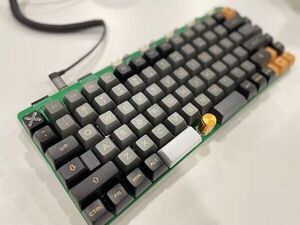
Seeed XIAO Mechanical Keyboard and Development Board
"DIY mechanical keyboard doubling as a XIAO development board with lots of Grove ports and fancy features! I have always been fascinated by mechanical keyboards and keyboards in general and have experimented with some wild designs, but I never got around to building my own. At the time, everyone was building keyboards using Teensy or ProMicro, which have their limitations. Everything changed when the Seeed XIAO boards came along and the keyboard contest run by Seeed challenged the keyboard community to realize the potential of the tiny development boards. Around the same time as the keyboard competition, Seeed decided to run its own internal competition for Seeed employees. This was the perfect outlet for my built-up tinkering energy and so I decided to build my own keyboard!" [...]

Make a Coooool Wio Terminal Robot Stand
"a 3D-printed robot shape stand to embed your Wio Terminal In order to enable my Wio Terminal stand on the desktop, I made a cool stand for it, so I designed this little robot stand to embed the device as its head. When there are some emojis on Wio Terminal's LCD screen, the robot looks way too coool, right? " [...]
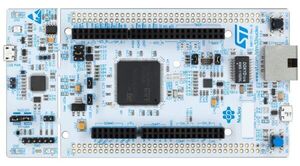
A bare metal programming guide
"This guide is written for developers who wish to start programming microcontrollers using GCC compiler and bare metal approach. We are going to use a Nucleo-F429ZI development board with STM32F429 microcontroller (buy on Mouser). But basic principles would be applicable to any other microcontroller. In this guide, I'll show how to program a microcontroller using just a compiler and a datasheet, nothing else. Later I'll explain what are the vendor's CMSIS headers, how and why they should be used. We'll learn how to blink LEDs, how to redirect printf() to UART, how to set up the system clock, how to use interrupts, and even how to run a web server with device dashboard." [...]

Fingerprints authentication and collect attendance
"Build a Raspberry Pi-powered system to identify attendance and use pandas to collect data that can help attendace management. Recognizing fingerprints on Raspberry Pi can be made easy with a few sensors by simply wiring. Raspberry Pi also helps the retailer this way to collect punch-in/punch-out process as a check-in machine. Fingerprint Sensor AS608 Fingerprint Sensor is an optical fingerprint sensor module that makes fingerprint detection and verification simple. AS608 is an integrated optical fingerprint chip with a fingerprint algorithm inside. The AS608 module uses an 8pin control interface." [...]

Sensor DataLogger
"Collecting sensor data from an MCU, transmitting it via BLE, controlling it with an App, and logging it remotely on a spreadsheet. Introduction In my last tutorials using the Seed XIAO BLE Sense, we explored embedded machine learning applications, using data generated by its sensors as the accelerometer: TinyML Made Easy: Anomaly Detection & Motion Classification, and microphone: TinyML Made Easy: Sound Classification (KWS). In the accelerometer case, the data was collected by connecting the XIAO directly to Edge Impulse Studio via a serial port using the computer. " [...]
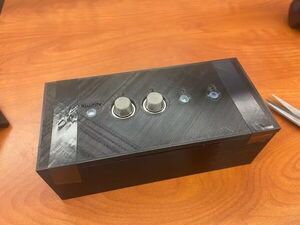
Hazardous Gas Detector
"The handheld hazardous gas detector is a lifesaving device for technicians and engineers who want to ensure their safety at work. Alex Whitaker and Sam Weaver spent their past summer working at chemical plants with numerous hazards, including ethanol, nitric acid, nitrogen, hydrogen gas, ammonia, and other hazardous gasses. We both decided to develop a solution to help mitigate the risks engineers and technicians face as they accomplish their tasks. The hazardous gas detector can be worn around the belt and can hold up to 2 sensors. These can work very well if multiple technicians are together simultaneously. The problem we aim to solve is to allow technicians to know if they are in an area of immediate danger and if they are, they can take steps to vacate the premises." [...]

ILI9341 TFT LCD - tiny anti-aliased colour text
"It has colour so use it! 5x10 character cells. Amazingly legible. Small. Fast. Minimal dependencies." [...]

Color Mixer Box
"How are you doing, guys? So this is Color Mixer Version 1, which is basically a DIY version of the commercially available RGB Box used in photography. The commercially available "RGB box lights" is used in cinematography to set various different kinds of scenes. If we ought to buy these lights, they are not exactly cheap and sometimes hard to find, so I thought why not make a DIY alternative using an Arduino Board with WS2812 LEDs and a few components? The DIY version is basically an RGB controller that has three pots for changing individual colors (R, G, and B). An OLED is also attached for displaying the value in 10-bit resolution." [...]

Mini Fogging Cauldron - No Dry Ice, No Fog Fluid
"Self-Contained Mini Fogging Cauldron - No Dry Ice, No Fog Fluid Want a tiny, completely self-contained fogging cauldron only suitable for the smallest of witches? Well, read on... While walking through a store just before St. Patrick's Day I saw some miniature cauldron 'pot-of-gold' party favors. I thought, "I'm not that into St. Patrick's Day, but these would be great for Halloween!" Why put gold coins in these mini cauldrons when they would be great for brewing a bubbling potion? Then, as serendipity would have it, while looking for some electronic atomizer boards, I saw a very small battery-powered, self-contained atomizer circuit board." [...]

Servo Drawing Machine
"This tutorial will walk you through how to design, create, and use a customizable drawing machine of your own making! The drawing machine uses a servo motor and Arduino Uno, but is accessible to folks who have not used either before. Supplies - Arduino Uno - Servo Motor (I used this one) - 3 Long Jumper Wires (these can be made using wire and 6 jumper pins) - USB cable for Arduino - Museum Board (cardboard, wood, or wood works as well) - Drawing Utensil of your choice (This brush pen works great, but feel free to get creative) - Bamboo Skewers - Glue" [...]
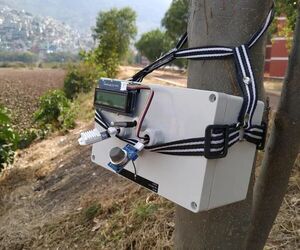
Environmental Toolkit for an Ecological Area V2.0
"Air pollution has a number of negative impacts on the environment, including damage to human health and natural ecosystems. The World Economic Forum has stated that air pollution is the ‘deadliest form of pollution’, while the World Health Organization claims that in 2016 over 92% of the world’s population reside in places where air pollution exceeds health and safety limits. Despite these unbelievable facts, some countries - like the UK, US, Australia and New Zealand - are seeing a decrease in the amount of air pollution. Although urban green spaces are not solely responsible, it’s undeniable that these areas have contributed to the overall decline. I live on the shores of a big city, and close to an ecological reserves with natural lakes and migrating birds of all species. I developed a LoRaWAN System with the Arduino MKR WAN 1300, that help me to monitor the air quality and water ot the ecological reserve of my community." [...]

3D Printed Chistmas Tree Lamp
"Since Christmas is near, I have taken my DNA Lamp design and turned it into a christmas tree. This was also a nice project to learn my new 3D printer and how to design my own 3D Model. This is the latest evolution of my lamps. It looks like I am addicted to LED lamps. Just see my other instructables... Basically it is an Arduino microcontroller with an LED strip and touch sensors hidden in the 3D printed case. Supplies - Arduino Nano - 60 LEDs/Meter Neopixel LED strip with 15LEDs (25cm)." [...]

Nostalgic CMOS Frequency Meter
"The CMOS series of integrated circuits appeared shortly after the TTL series. This means that at the beginning of the 70s it was available on the market in an accessible way for any user. Hence the nostalgia of those who used these circuits and who remember those years. Today, these integrated circuits are considered outdated, but building a device that uses them can bring back pleasant memories, can bring back into use components that would otherwise constitute electronic waste, and last but not least, a useful device could be obtained in the electronics technician's laboratory. The HCMOS series appeared on the market a little later and had, in addition to CMOS (low consumption and higher degree of integration compared to TTL), an increased working speed. The latter can be used at over 60 MHz." [...]
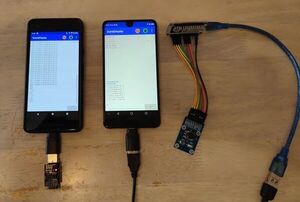
Wireless Joystick Module Experiment With ESP8266 on ESP-Now
"Extending from the idea of my previous post Joystick Module Calibration and Press Detection, this post is an attempt to futher ehnance the code to implement wireless Joystick support over ESP-Now communication protocol, which is built-in to ESP microcontroller boards. Two ESP microcontroller boards are need. One as server, which will have physical Joystick module attached. One as client, which will be receiving Joystick signals (ESP-Now packets) from the server, to realize wireless "virtual" Joystick. Here, I will only use ESP8266 microcontroller boards -- ESP01 board and ESP8266 board (NodeMCU). Of cause, the ESP-Now communication protocol doesn't require that the boards be the same type, and therefore can be ESP32." [...]

Programmable Keypad Rev B
"This is second hardware revision for Programmable Keypad project I made some time ago. General concept and code for this project has not changed. So please check original post for this project if you want to get better understanding about it. In a nutshell this device is a Keypad which uses Arduino Pro Micro as keyboard emulator. Each button sends key press combination over USB which is mapped to some particular action on operating system. " [...]
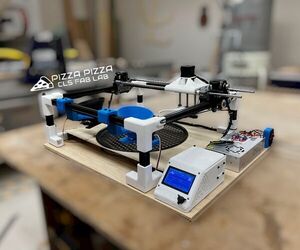
Pizza-Pizza CNC Machine
"A Pizza-Preparing, Tool-Changing, 3-Axis, 3D-printed CNC Machine! Hey! I'm Teddy Warner,a senior in high school enrolled at Charlotte Latin School in Charlotte, North Carolina. I have a great interest in modern digital fabrication technologies such as 3D printing & CNC machines. The Pizza-Pizza CNC Machine is a Marlin-based three-axis CNC I developed alongside three of my friends. My contributions to the project include the gantry, electronic housing, and parts of the frame CAD, as well as the machine's electronics system, firmware, and pizza-preparing gcode." [...]
Secção Videos
Videos interessantes.
That's all Folks!



